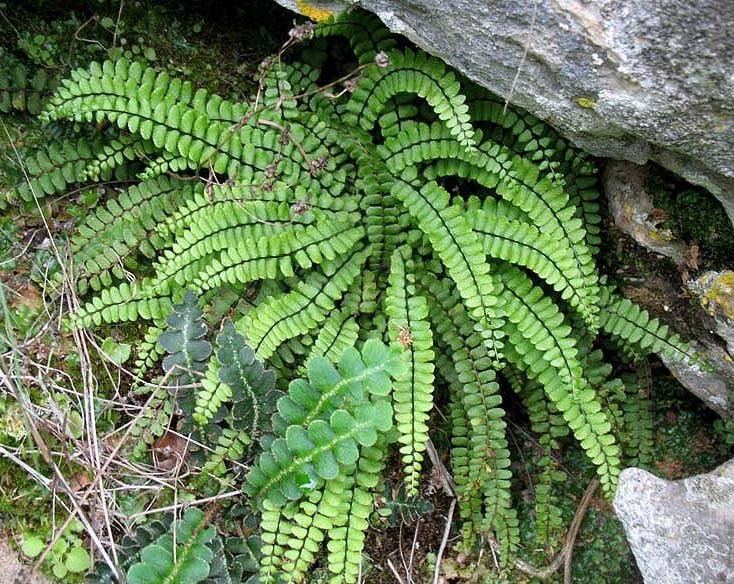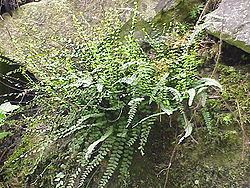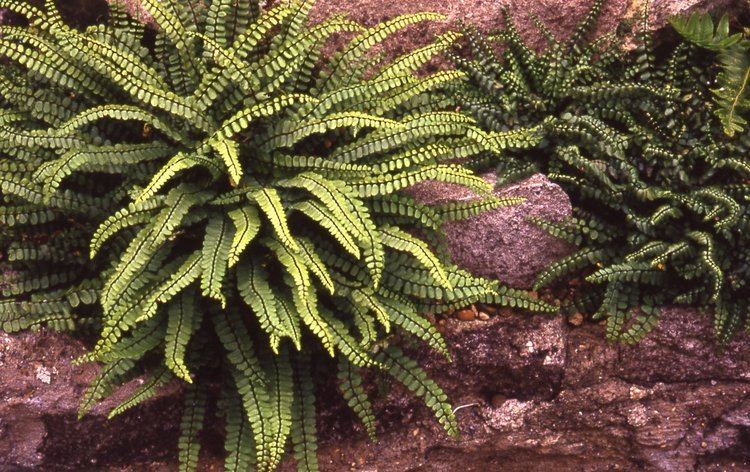Division Pteridophyta Scientific name Asplenium trichomanes Rank Species | ||
 | ||
Similar Asplenium, Aspleniaceae, Asplenium viride, Asplenium ruta‑muraria, Asplenium scolopendrium | ||
Asplenium trichomanes (commonly known as maidenhair spleenwort) is a small fern in the spleenwort genus Asplenium. It is a widespread and common species, occurring almost worldwide in a variety of rocky habitats. It is a variable fern with several subspecies.
Contents

Asplenium trichomanes
Description
It grows in tufts from a short rhizome. The fronds are long and narrow, gradually tapering towards the tip. They are simply divided into small, yellow-green to dark-green pinnae. The stipe and rachis of the frond are dark all along their length. The fronds can reach 40 cm in length but are more commonly 8–20 cm. They bear long, narrow sori which contain the spores.
Subspecies

Asplenium trichomanes has diploid, tetraploid and hexaploid cytotypes, which it has been argued should be recognised as distinct species. A triploid cytotype (a sterile hybrid between the diploid and tetraploid cytotype) is also known. Within these cytotypes several subspecies are recognised, including

Distribution and habitat
It is widespread in temperate and subarctic areas and also occurs in mountainous regions in the tropics. Its range includes most of Europe and much of Asia south to Turkey, Iran and the Himalayas with a population in Yemen. It occurs in northern, southern and parts of eastern Africa and also in eastern Indonesia, south-east Australia, Tasmania, New Zealand and Hawaii. It is found in North America and Central America and Cuba, and the northern and western regions of South America such as Chile.
It grows in rocky habitats such as cliffs, scree slopes, walls and mine waste, the type of rock used as a substrate depending on the subspecies. It grows from sea-level up to 3000 metres in North America while in the British Isles it reaches 870 metres.
